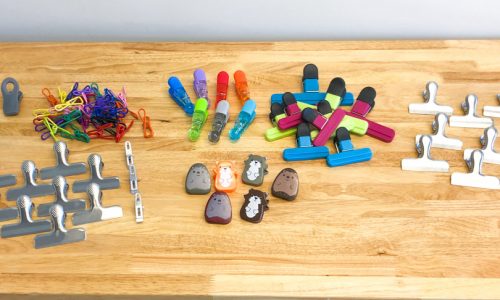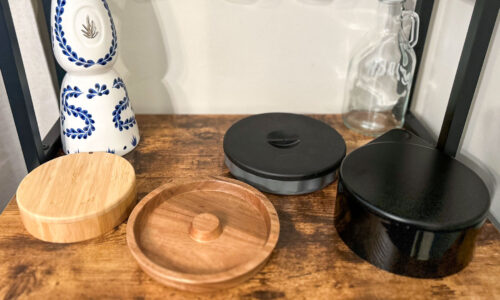The Best Trivet

Our Review Process
Don't Waste Your Money is focused on helping you make the best purchasing decision. Our team of experts spends hundreds of hours analyzing, testing, and researching products so you don't have to. Learn more.
Our Picks For The Top Trivets
- 1. Smithcraft Heat-Resistant Silicone Trivets, 4-Piece
- 2. Walfos Slip-Resistant Silicone Trivets, 4-Piece
- 3. NC Assorted Sizes Bamboo Trivets, 4-Piece
- 4. KooMall Assorted Sizes Silicone Trivets, 4-Piece
- 5. ANNIOCA Food Grade Silicone Trivets, 4-Piece
- 6. Zulay Kitchen Waterproof Stain-Resistant Silicone Trivets, 2-Piece
- 7. Jennice House Heat-Resistant Cotton Weave Trivets, 3-Piece
- 8. FENGCHEN Compact Design Foldable Trivets, 3-Piece
- 9. Colinda Dishwasher Safe Silicone Trivets, 4-Piece
- 10. Garkup Storage Rack & Bamboo Trivets, 4-Piece
The silicone in these mats is free of BPAs and effective for a range of uses. As simple trivets, they keep countertops safe and can double as potholders in a pinch. The "honeycomb" indentations may require a little more cleaning but they help with trapping spills.
Slip-Free ProtectionFunctionality is the word with these silicone mats.
You can use these to save countertops, microwave plates or almost anywhere there's a hot pan or bowl. They're even built to resist temperatures well over 400 degrees. Between uses, the nonstick surface wipes clean easily.
Safe Most AnywhereThese trivets hold up well in extreme heat or cold.
Wood grain finish sets off the simple, modern design of this set. The result is a quartet of trivets you can use proudly at Thanksgiving or other big meals. They're just thick enough to provide protection for tables and counters but thin enough to store with ease.
Durable, Rustic CharmProtect your dining room surfaces with modern flair.
The ridged texture makes these superior to solid trivets in a number of ways. Tiny pockets let air flow underneath hot pans, dispersing temperature and keeping the heat off your counters. They're a breeze to clean thanks to the dishwasher safe silicone.
Dishwasher Safe TrivetsThe thicker material makes this ideal for heavy pans.
Buying Guide
Congratulations! If you know what a trivet is, you’re officially an adult — at least when it comes to the kitchen. We’ve all been to a big family dinner and seen those cloth mats or squat iron platforms that were used to keep hot pots and casserole dishes off the sensitive wood of the tabletop. You may have noticed them, but didn’t care enough to ask what they were called. But cook enough meals for enough people, and you’ll realize how essential they are.
In terms of functionality, trivets have historically been a one-trick pony. As long as it can keep burn marks off your table, it’s an effective trivet. But as kitchens and storage needs evolved, modern trivets picked up the ability to multitask.
That’s especially true for silicone trivets, which are a great everyday solution for busy families. Most food-grade silicone can withstand temperatures well above 400 degrees or below -50 degrees Fahrenheit. That means that it can easily protect most surfaces from food coming straight out of the oven or freezer, and you can even use it in the microwave. And while microwave trays don’t really need heat protection, many people use a silicone trivet to protect the tray from stray spills and spatter.
That heat resistance also means you can use it as a potholder if the trivet is ergonomically designed. For your own safety, make sure you only try this with thicker silicone.
Mind you, old-school cloth trivets make great potholders as well, but they lack the best feature of quality silicone: Cleanability. That may not be a real word, but it’s the only one that fits when it comes to silicone’s non-stick properties. You can rinse the material clean from all but the worst stains, and it’s usually safe in the dishwasher.
Still, most silicone trivets do lack something when it comes to presentation. If you’re looking for something that will elevate your dishes both literally and aesthetically during formal dinners, you may want to look for a traditional cast iron trivet. Many families still pass them down as family heirlooms, since they’re durable enough to outlast generations. Handle with care, though: The metal can scratch tabletops.
The same goes for wooden or ceramic trivets to a lesser degree. Bamboo in particular has great heat resistance and the look is a perfect fit for rustic kitchen decor. Cast iron, ceramic and bamboo can take up more space in your cabinets and may require a little more care when cleaning, but they’re good to have around when company shows up for dinner.
If storage space is scarce, silicone trivets aren’t the only ones that are easy to stow away. Cloth trivets have a very homey feel, and work just fine with smaller, lighter cookware. Cork is another thin material that can take the heat, though it is more prone to fray at the edges. For both cloth and cork, you may want to buy a trivet with reinforced borders.
What to Look For
Antique trivets are an heirloom for many families, and they can still find practical use at Thanksgiving or other special meals. Just make sure to handle them with care, especially when it comes to brass or copper. These metals were popular choices for decorative trivets in the early 1900s, but they can be delicate. Both can be washed in warm soapy water, and a light scrub with a toothbrush can remove stains that accumulate in any grooves. If you choose to polish, just make sure you’re not dealing with lacquered brass. Polish can remove the lacquer and leave behind an uneven finish.
More to Explore
It’s difficult to determine when the first trivets were used, although we know that the first ones weren’t used to keep hot pots off the table — they were used to keep hot coals off the pot. The first large trivets stood above cooking fires and held the containers steady. As campfires became less common and dining rooms beckoned, smaller trivets evolved into their current use. The word “trivet” likely has Latin roots, as it’s loose meaning is “three-legged stand”.














